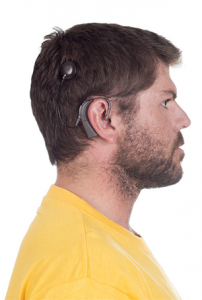How impaired is sound quality in patients who use cochlear implants (Cis), and what existing measures of sound quality exist?
Bottom line
Physical and electrophysical limitations inherent to CI-mediated listening, in combination with existing studies of CI performance on various auditory tasks, suggest that sound quality perception in the CI population is limited by a range of factors, most notably pitch distortion and dynamic range compression. The study of CI-mediated sound quality requires the development of more objective, systematic, and quantitative measures.
Explore This Issue
June 2017
© Elsa Hoffmann / shutterStock.com
Background: Despite advances in CI technology, significant perceptual limitations remain, particularly for complex sounds like speech in noise, voice emotion, and music. One major limiting perceptual construct is sound quality. While a number of studies have highlighted diminished sound appraisal in CI users, sound quality perception remains relatively unexplored.
Study design: Literature review.
Synopsis: The authors reviewed the existing literature on PubMed and Scopus to present what is known about perceptual sound quality in CI users, discuss existing measures of sound quality, explore how sound quality may be effectively studied, and examine potential strategies of improving sound quality in the CI population.
Sound quality, defined here as the perceived richness of an auditory stimulus, is an attribute of implant-mediated listening that remains poorly studied. Sound quality is distinct from appraisal, which is generally defined as the subjective likability or pleasantness of a sound. Existing studies suggest that sound quality perception in the CI population is limited by a range of factors, most notably pitch distortion and dynamic range compression.
Although there are currently very few objective measures of sound quality, the CI-MUSHRA has been used as a means of evaluating sound quality. There exist a number of promising strategies to improve sound quality perception in the CI population including apical cochlear stimulation, pitch tuning, and noise reduction processing strategies.
Citation: Caldwell MT, Jiam NT, Limb CJ. Assessment and improvement of sound quality in cochlear implant users. Laryngoscope Inv Oto. Published May 28, 2017. DOI: 101002/lio2.71.